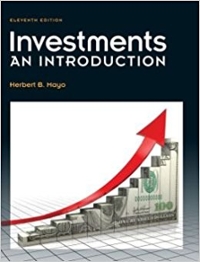You are given the following information concerning several mutual funds: Fund Return in Excess of the Treasury
Question:
You are given the following information concerning several mutual funds:
Fund Return in Excess of the Treasury Bill Rate Beta A 12.4% 1.14 B 13.2 1.22 C 11.4 0.90 D 9.8 0.76 E 12.6 0.95 During the time period, the Standard & Poor’s stock index exceeded the Treasury bill rate by 10.5 percent (i.e., rm 2 rf 5 10.5%).
a) Rank the performance of each fund without adjusting for risk and adjusting for risk using the Treynor index. Which, if any, outperformed the market? (Remember, the beta of the market is 1.0.)
b) The analysis in part
(a) assumes each fund is sufficiently diversified so that the appropriate measure of risk is the beta coefficient. Suppose, however, this assumption does not hold and the standard deviation of each fund’s return was as follows:
Fund Standard Deviation of Return A 0.045 (5 4.5%)
B 0.031 C 0.010 D 0.014 E 0.035 Thus, fund A earned a return of 12.4 percent, but approximately 68 percent of the time this return has ranged from 7.9 percent to 16.9 percent. The standard deviation of the market return is 0.01 (i.e., 1 percent), so 68 percent of the time, the return on the market has ranged from 9.5 to 11.5 percent. Rank the funds using this alternative measure of risk. Which, if any, outperformed the market on a risk-adjusted basis?
Step by Step Answer:






